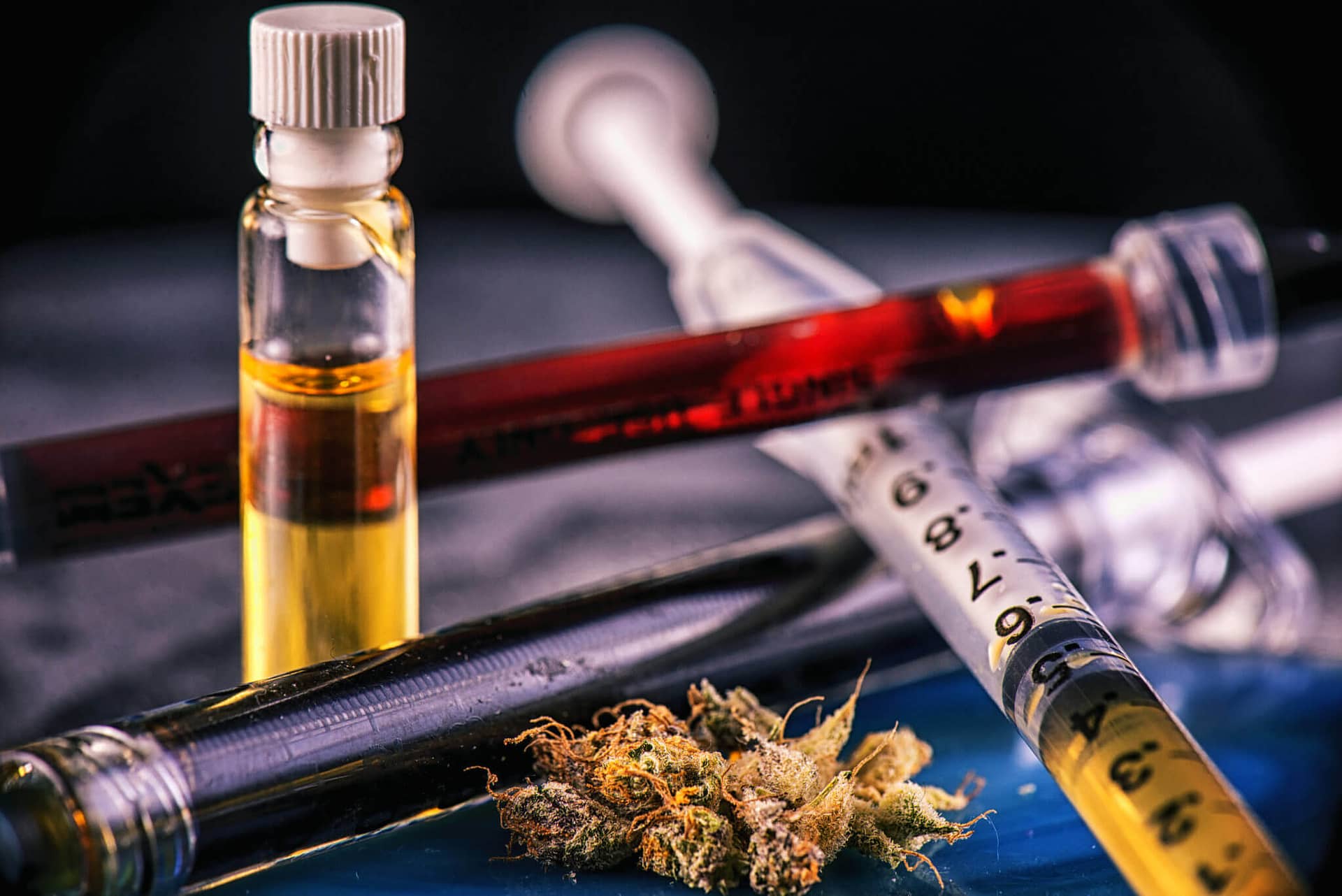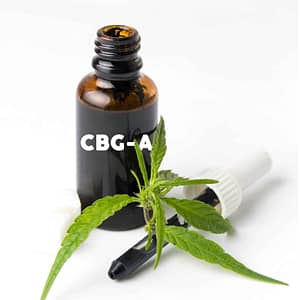Cannabinoid Acids

 Cannabigerol Acid (CBG-a)
Cannabigerol Acid (CBG-a)
A small amount of scientific research on cannabinoids has been carried out so far, so we are still trying to understand the interaction of cannabinoids and the endocannabinoid system.
So far, cannabinogerol acid is commonly referred to as the “cannabinoid stem cell”. CBG-A is the first to be formed in a plant, what makes it a precursor of other cannabinoid acids (such as CBD-A, THC-A, CBC-A, THCV-A).
CBG-A supports the fight against cancer through its anti-proliferative capabilities. Just like other cannabinoids formed from CBG-a, cannabigerol acid supports fighting apoptosis, which is a cell death considered to be a frequent cause of cancer progression.
Researchers reveal that cannabinoids based on cannabigerol acid stimulate apoptosis in an unprecedented way, giving hope to find a cure for cancer.
Cannabigerol acid is also used as a painkiller, ensuring the comfort of life among terminally ill patients and as an antibacterial compound that inhibits bacterial growth. Patients admit that the systematic use of cannabigerol acid helps to reduce inflammation.
Research has shown that cannabis plant geneticists are able to achieve the highest levels of cannabigerol acid in cannabis plants at the level up to 94%. This high concentration is caused by inhibition of synthesis by the recessive gene in the plant.

 Cannabidiol Acid (CBD-a)
Cannabidiol Acid (CBD-a)
The highest level of CBD-A is found in young cannabis plants and has no psychoactive effect. Cannabidiol acid is converted to CBD after cutting, drying and heating the plants under the process of decarboxylation.
A small amount of scientific research on cannabidiol acid has been carried out to this day. However, the results of a few studies and patients’ observations indicate the therapeutic use of this cannabinoid.
CBD-A proves to be effective in reducing inflammation. According to the results of the experiment published in 2008 called ‘Drug Metabolism and Disposition’, cannabidiol acid proved to be a selective inhibitor of the COX-2 enzyme playing an important role in the development of pro-inflammatory compounds called prostaglandins, found in aspirin or ibuprofen.
CBD-A is able to relieve nausea and vomiting better than decarboxylated cannabidiol. Young plants appear to be more helpful in alleviating nausea and nervousness of the stomach in rodents, which was confirmed by a study from 2012 published in the British Journal of Pharmacology.
Cannabidiol acid enhances the effect of other cannabinoids in treating cancer. A study from 2012 showed that CBD-A is able to effectively stop the migration of breast cancer cells in laboratory conditions on Petri dishes. Despite the lack of documented clinical trials on humans, CBD-A showed a positive effect on stopping cancer from developing and preventing the migration of cancer cells to other organs of the body.
We don’t have results of detailed studies on the use of cannabidiol acid in the treatment of psychosis yet, but we know, that the biopharmaceutical companies are conducting them on an increasing scale. The British corporation GW Pharmaceuticals has already decided to include the CBD-A in a patent application for the use of cannabinoids in combination with antipsychotic drugs.
CBD acid blends in with a diet rich in juices, cocktails, as well as salads and salad dressings.

 Tetrahydrocannabinol Acid (THC-a)
Tetrahydrocannabinol Acid (THC-a)
Tetrahydrocannabinolic acid known as THC-A is a compound found in cannabis plants. Along with the development of scientific research, we are learning about the increasing therapeutic potential of THC-A. Psychoactive effect appears, when the plant is mature or cut and THC-A is converted to THC through a decarboxylation process.
There isn’t enough research on THC-A, that would allow us to clearly determine its properties and dosage. Studies carried out so far indicate anti-inflammatory properties used in the treatment of arthritis.
THC-A has also neuroprotective properties that turn out to be effective in treating neurodegenerative diseases such as Alzheimer’s and Parkinson’s.
Prostate cancer research has revealed the additional use of tetrahydrocannabinol acid associated with its antiproliferative properties.
Patients indicate that THC-A helps them fight insomnia and pain.
Studies show that tetrahydrocannabinol acid helps to relax muscle spasms, which is why it’s used by people struggling with muscle spasticity.
The highest level of THC-A is found in young, living or freshly harvested plants. Any cannabis strain with a high concentration of THC that hasn’t yet been decarboxylated contains a lot of THC-A.
Some products are sold specifically for the properties of THC-A, which provides THC benefits without the risk of psychoactive effects.
Research into the effects of this cannabinoid is ongoing.

 Cannabichromic Acid (CBC-a)
Cannabichromic Acid (CBC-a)
Cannabichromic acid (CBC-a) is considered one of the major cannabinoids found in cannabis.
The highest concentration of CBC-A is found in tropical cannabis varieties, but it is present at various levels in most Cannabis strains.
The development of knowledge about cannabis plant genetics has allowed them to obtain special strains with increased CBC-A content.
Very little research has been done on cannabichromene acid so far. However, the researchers point out that CBC-A may have anti-inflammatory and antibacterial properties.
It’s believed that cannabichromic acid is formed in the early stages of plant development. It appears even in small seedlings much earlier than THC is produced.
CBC-A doesn’t show psychoactive properties and can be transformed into cannabichromene (CBC) as a result of decarboxylation, i.e. exposure to air, light and heat.




